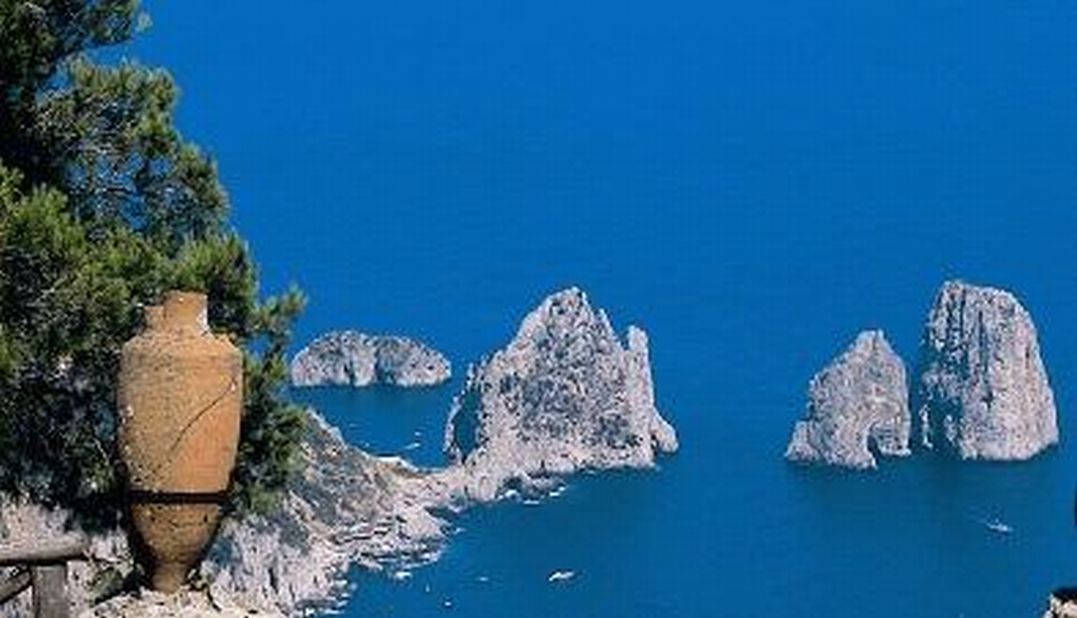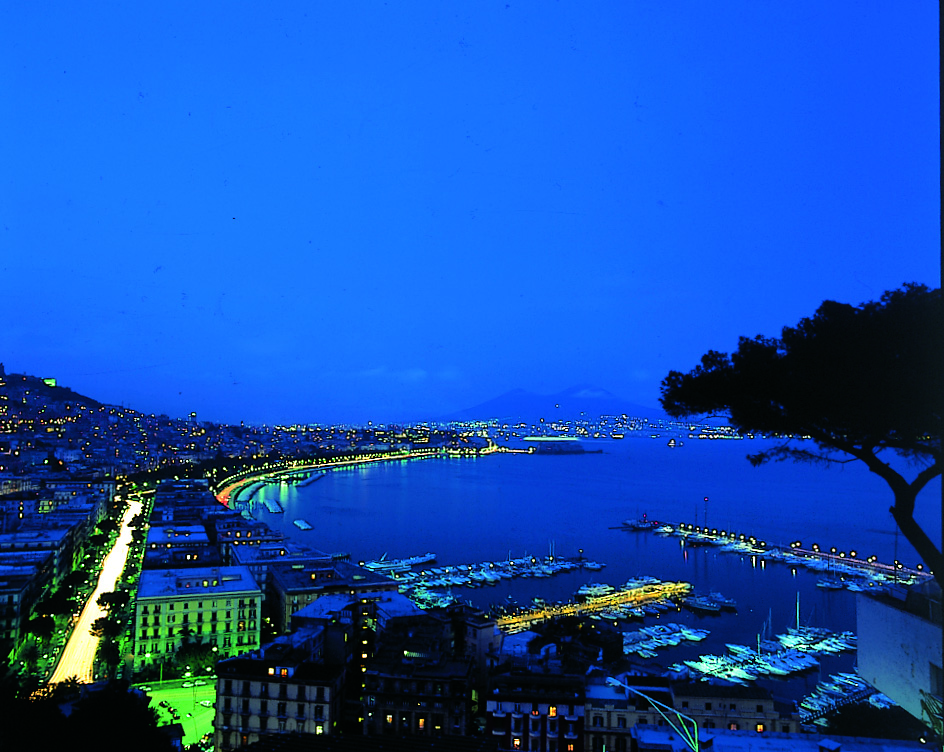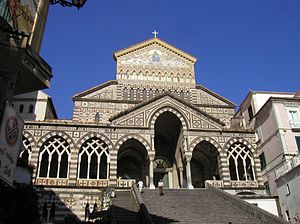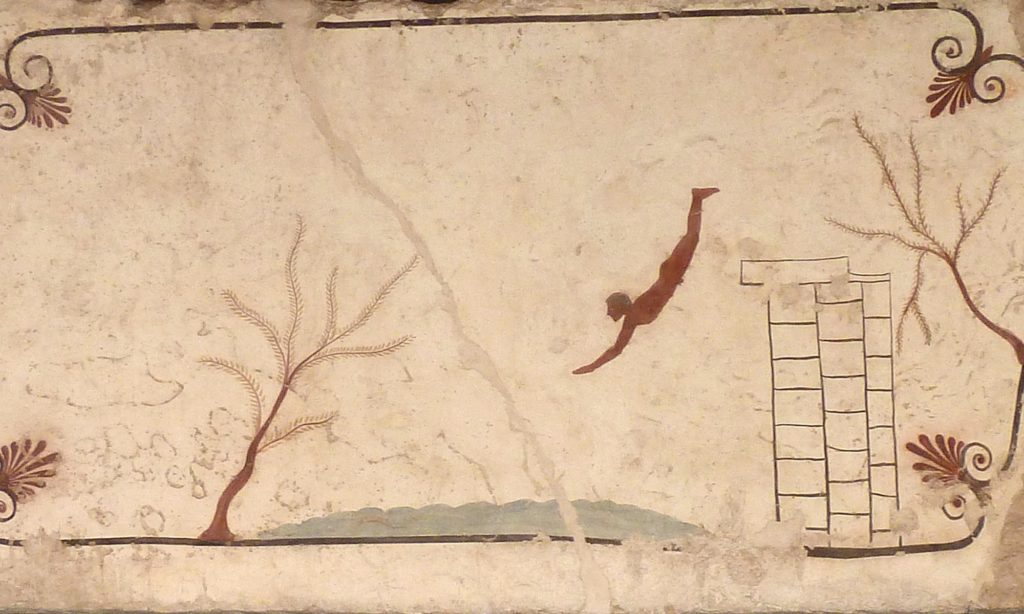
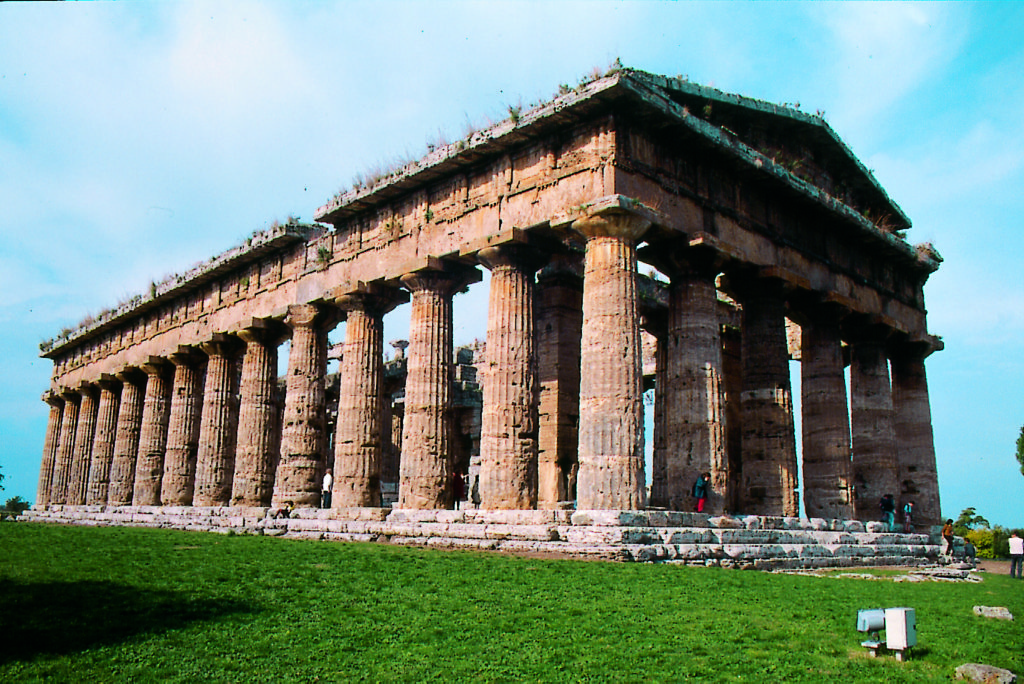
世界遺産にも登録されているパエストゥム考古学遺跡は、サレルノ市内から、車で約30分ほどのところにあり、規模としては南北に6㎞、東西に1.5㎞。
![]() Archeological site of Paestum is designated World Heritage. It is accessible approximately 30 minutes by car from Salerno city. The scale of this site is extending 6km north to south and 1.5Km east to west.
Archeological site of Paestum is designated World Heritage. It is accessible approximately 30 minutes by car from Salerno city. The scale of this site is extending 6km north to south and 1.5Km east to west.
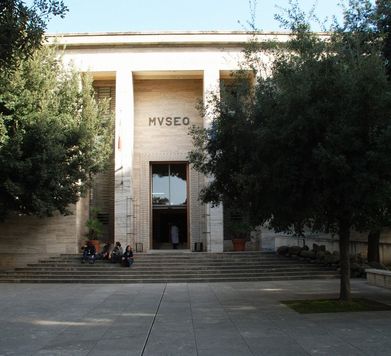
遺跡の前に建てられた考古学博物館には、先史時代からの発掘物が収められています。 石棺のふたの内側に描かれた有名な絵は、通称「ダイバーの墓(Tomba del Tuffatore)」と呼ばれ、彼岸への旅立ちを表しています。
![]() The Paestum Museum is in front of the ruins of archeological site housing the excavated of prehistory. ”The tomb of the diver” is well known, symbolizing the moment of death to hereafter.
The Paestum Museum is in front of the ruins of archeological site housing the excavated of prehistory. ”The tomb of the diver” is well known, symbolizing the moment of death to hereafter.
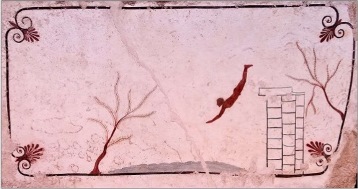
詳しく見ると、ダイバーが飛び込むのは、右端の煉瓦のような壁からで、この煉瓦の数は24、一日の単位24時間を表し、現世との境界を表しています。 2本の木には、7本の枝があり、1週間7日の単位を表しています。また、7は、人間の7つのチャクラを表しているとも。
![]() Specifically, the wall on right side is made of 24 bricks to imply 24 hours and 7 branches of a tree indicating 7days or 7 chakras of human body.
Specifically, the wall on right side is made of 24 bricks to imply 24 hours and 7 branches of a tree indicating 7days or 7 chakras of human body.
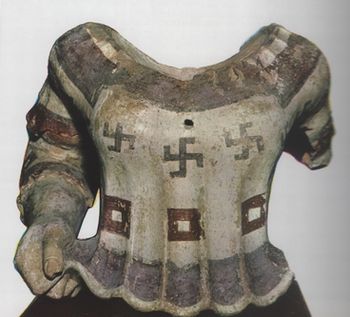
この頭部がない女性の胸部であるテラコッタの発掘物は、およそ紀元前500年頃のもので、建築物の装飾であったと思われています。
![]() This terracotta bust of a woman shorn of its head dates circa 500 BC and undoubtedly part of an architectural decoration.
This terracotta bust of a woman shorn of its head dates circa 500 BC and undoubtedly part of an architectural decoration.
Swastika

このような古代の発掘物の模様にスワティカ(カギ十字)があるのを目にして驚く人もいるでしょう。 ナチスの強力なシンボルとして問題視されるこの模様は、紀元前からヨーロッパ他、世界中で使用されていました。スワティカは、サンスクリット語から由来ともいわれ、幸運、幸福を表し、宗教でも用いられ日本の寺の表示には、卍が使われています。
![]() Visitors are sometimes disconcerted by the black swastikas that decorate the bust but the swastika was in fact an ancient symbol often used as an ornamental motif or with a religious significance it has also been found in Byzantine buildings and Buddhist inscriptions and was even a symbol widely diffused among the Native Americans.
Visitors are sometimes disconcerted by the black swastikas that decorate the bust but the swastika was in fact an ancient symbol often used as an ornamental motif or with a religious significance it has also been found in Byzantine buildings and Buddhist inscriptions and was even a symbol widely diffused among the Native Americans.



